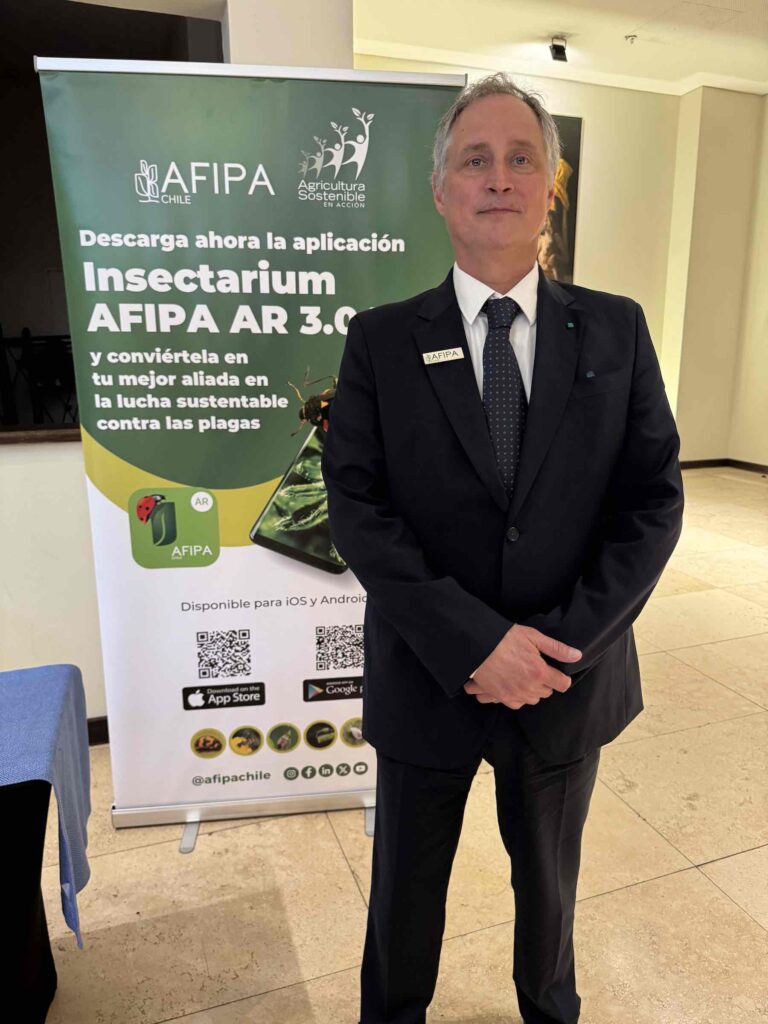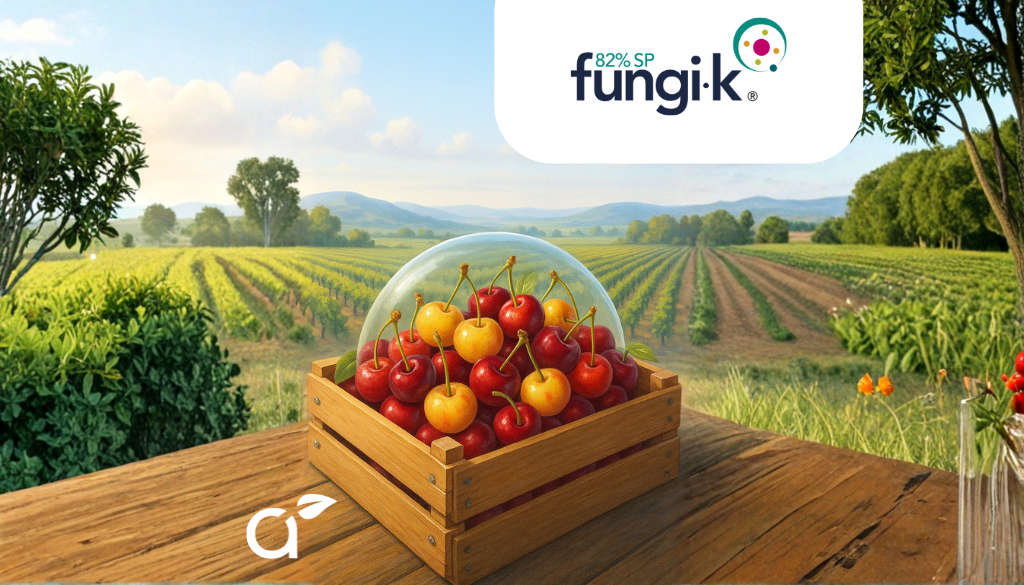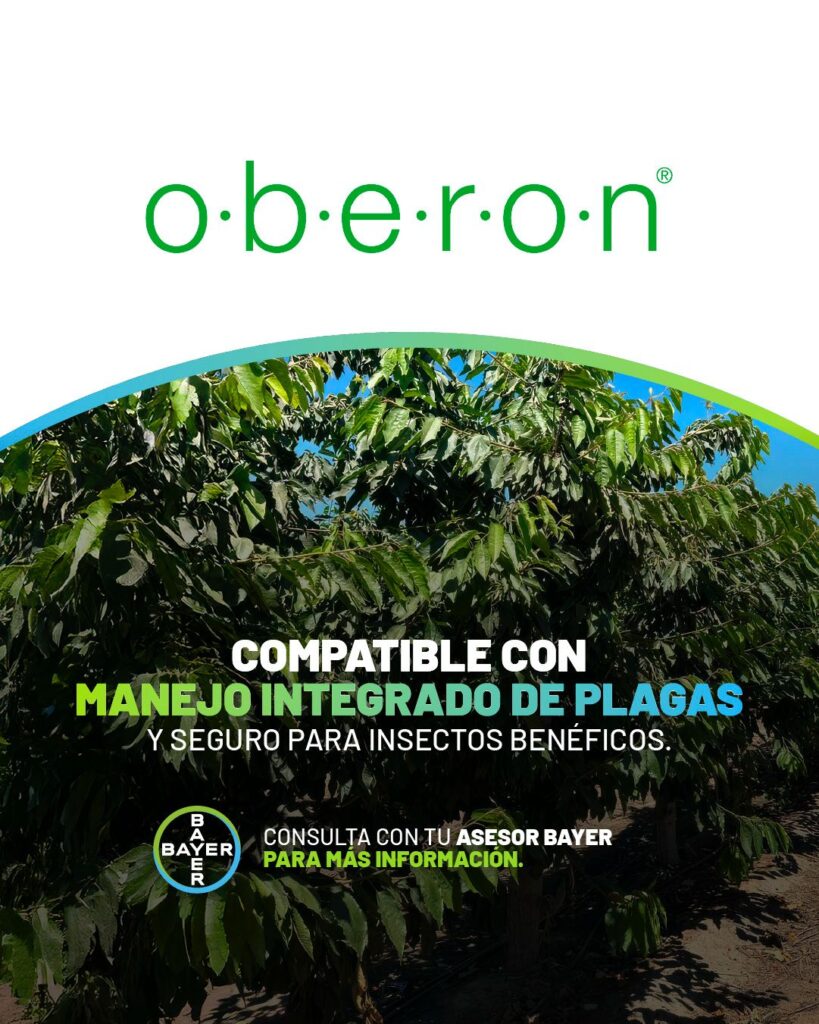Carlos Tapia T. Agricultural Engineer – M.Sc Technical Director Avium.
Emilio Martínez G. Agronomist Lead R+D+i Avium.
Nicolás Martínez G. Computer Engineer Avium Technical Support.
The following study developed by the R&D Department of Avium reveals the phenological moments, application frequencies and the use of the correct technical dose to achieve maximum efficiency in foliar applications of calcium. The above is always aimed at achieving productive potential based on the quantity of fruit, measuring different indicators, such as Ca content in the fruit, dry matter, sugar content, fruit weight, etc.
When talking about a business as attractive as cherries, it is undoubtedly necessary to talk about what happens at the country level year after year. The recent cherry season in Chile closed with an export record of more than 352 thousand tons, representing an increase of 54.31 TP3T compared to the previous campaign. Despite breaking this record, the commercial results since mid-season were not as expected, mainly due to rumors about the alleged presence of Covid-19 in a box of Chilean fruit in China, which lowered demand and therefore prices, hitting the sector hard and substantially harming sales of this product in the main market for this crop.
It is in these undesirable instances that the fruit must be prepared for long periods of time in containers in the various markets without being able to be opened or, rather, waiting miraculously for the demand for the product to pick up again so that prices can return to normal.
In such a scenario, we begin to wonder: what condition will our cherries be in? Or rather, we go further back and begin to question whether the management and/or nutrition strategies that were used during the season were adequate to withstand this type of problem. These are questions that we should be asking ourselves constantly, and not ones that depend on unprecedented circumstances in order to build a cherry of the highest quality and condition, always considering the optimal productive potential of the orchard.
Within this line of work, as an R&D department, we have carried out studies on the use of foliar Ca applications to discover the correct dose, based on the nutritional levels appropriate at the time of harvest, where we have been able to preliminarily establish the optimal nutritional content of cherries (Fig. 1).
These indices, which are a reference guide, should be an important aspect when determining the strategies regarding the nutritional plan to be implemented during the season, considering that the fruit is the product that will finally be marketed, at which time it will be reflected how well the work was done during the season, being a kind of "final exam" for all of us who work in the industry.

Among the objectives of the last seasons for the Avium R&D team, studies have been conducted regarding improving the condition and quality of the fruit; this is in response to being able to determine quantifiable indices that help us make objective decisions in the work and nutritional strategies in the field. Thus, in the 2018-2019 and 2019-20 seasons, research was carried out regarding foliar applications of Ca in two adult cultivars in a commercial cherry orchard in the central area of Chile, where different foliar application strategies were established, according to the concentration of use of each product.
There are different opinions on how to apply foliar products; should it be done in doses, expressed in Litres per day?-1 or at a use concentration normally expressed in Litres hL-1Our perspective, in which consistent results have been evident, is to always carry out applications in product concentration per hectoliter, of course, considering a minimum dose per hectoliter and adjusting the volume of coverage/ha to the VHA (Tree Row Volume), where we can determine the actual coverage required.
As a theoretical basis for the study, one of the hypotheses that was put forward is that the higher the concentration of solutes in a medium, in this case in the laminar part of young tissues, the greater the absorption of the solution due to the osmotic potential gradient, and that these strategies are more conditioned by the phenological moments established early, rather than by the number of applications that could be made.
Calcium is an essential nutrient for the structural formation of cell walls, providing integrity and cohesion to plant tissues; it also acts as a chemical messenger between different organs and tissues of the plant. An optimal availability of this element in the fruit makes it less susceptible to problems related to mechanical damage during handling, storage and transport of the product.
The generality of the applications of foliar programs in cherries begins from the early stage, from the phenological state of exposed bunch (ER), since it also physiologically participates in vital functions such as multiplication and natural elongation and there would be green points that would allow the entry-assimilation of nutrients. The absorption of nutrients by young tissues and leaves is a mechanism that is still not entirely clear, however, there are studies that report that the greatest absorption is carried out by the underside of the leaf, where the density and the presence of stomata would be determining for the absorption of nutrients applied via foliar; however, the mechanism is still not entirely clear.
Two baseline studies were established, the first (Table 1) looking for the use of the number of investigations and the concentration of product use. The second study (Table 3) was carried out to confirm the use of high doses (concentrations double that recommended on each label), to see their real participation in the final quality of the fruit.
The studies were carried out on the cultivars Regina and Skeena, both on a Gisela® 6 rootstock, in an orchard with a density of 1,667 plants/ha and a load of between 15,000 and 18,000 kg/ha in both varieties.
The experimental units and repetitions were normalized to the same loading density (No. fruits/ASTT) so that they were comparable between them.

The application strategy of research 1 consisted of testing the use of a commercially available product, which for these purposes we will call “Calcium A”, with treatment 1 (T1) being the label concentration in five phenological states, starting at the early stage of exposed bunch until the fall of the jacket.
Treatment 2 (T2), same concentration of T1, but in ten applications, from exposed bouquet to veraison. Treatment (T3) consisted of double the concentration of T1. Treatment 4 (T4) was the program with a “Calcium B” at 300 cc hL-1 , according to the label of the commercial product used.

In this table you can identify the different indices measured, such as Total Ca, Soluble Ca and Bound Ca, all expressed in mg/100 g.; in addition, you can see the percentage of Soluble and Bound Ca that participate in Total Ca.
In practical terms, according to Figure 1, an optimal index is one in which the total Ca content exceeds 10 mg/100 g, being surpassed by T2 and T3 cv. Regina and by T1 and T3 in cv. Skeena. Technically, in both varieties, a better performance is shown in applications at double the label concentration over the rest (T3), as well as a greater quantity of Bound Ca (mg/100 g) in both cultivars.
In the literature, it can be found that there is a direct relationship between the fraction of calcium bound to the cell wall in the form of calcium pectates and the structural behavior of the tissues. There is a very marked nutritional condition with other indices and that it occurs regularly; we could say that more than 80% of the measurements are expressed in that the Ca / Dry M. / Soluble S. have a high degree of relationship, and that we can see in T2 and T3, in cv. Regina, where there is a significant difference in the indices of Dry M. and Soluble S. with respect to the other treatments, as we say internally: these parameters “talk very well with each other”.
To ratify treatments at twice the concentration of use according to the label, the following was proposed:

In research 2, a similar dynamic to the previous one can be observed, with “Calcium C” (T1) being the orchard application, “Calcium D” in T2 corresponded to the concentration on the product label, and T3 was twice the concentration of T2.
Table 4 shows the results obtained in the same varieties studied previously, with the difference that the applications were in five phenological states for all treatments in research No. 2.

In the orchard program (T1), Calcium C, we can identify a lower Total Ca content in the fruits, with a significant difference in favor of T2 and T3 (Calcium D and Calcium D *2), which correspond to the application of the label and double the label, respectively, compared to T1.
In treatments T2 and T3, in both varieties, statistical differences are obtained compared to the orchard program (T1), however, technically the treatment with the highest application concentration (T3) is the one that stands out with a higher total Ca content in the fruits.
Although Durofel (UD) measurements cannot determine clear differences in terms of fruit firmness, from our perspective it is important to consider the percentage of dry M. of fruits as an index that can help us to better conclude these results, since Durofel measurements are generally made when the fruit is at a higher degree of elasticity, due to the ambient temperature at which the fruit is harvested; the latter being one of the indexes that companies use to determine whether a fruit condition is suitable or not for a certain market. This is why it is very necessary to be able to understand the responses to the different technical management that is carried out in the orchard in the product that we are building, it is in this way that we can continuously improve to get an “optimal” fruit.
Conclusions:
The results of the high concentrations, which are double the normal use, have a marked consistency with respect to a greater accumulation of Ca in the fruit, and that could have determining effects on the arrival of the fruit at its destination.
This is how research No. 1 proposed, first of all, the applications of Ca in different phenological states and at different concentrations, obtaining as a result a greater accumulation of the Ca content in the fruits in the applications made from bunches exposed to sheath fall and with the highest concentrations used.
In addition, to confirm the results obtained in said research, a program of applications was carried out from bouquets exposed to shedding, as research No. 2, consistently showing that early applications at doses with a higher concentration have a better response in the accumulation of Ca in cherry fruits at harvest.
Acknowledgements:
Santa Ana del Rosario Agricultural Company, Los Helechos Farm.
Gabriel Gonzalez, Ulises Tapia and Tristan Munoz.
Avium SpA Technical Team.








